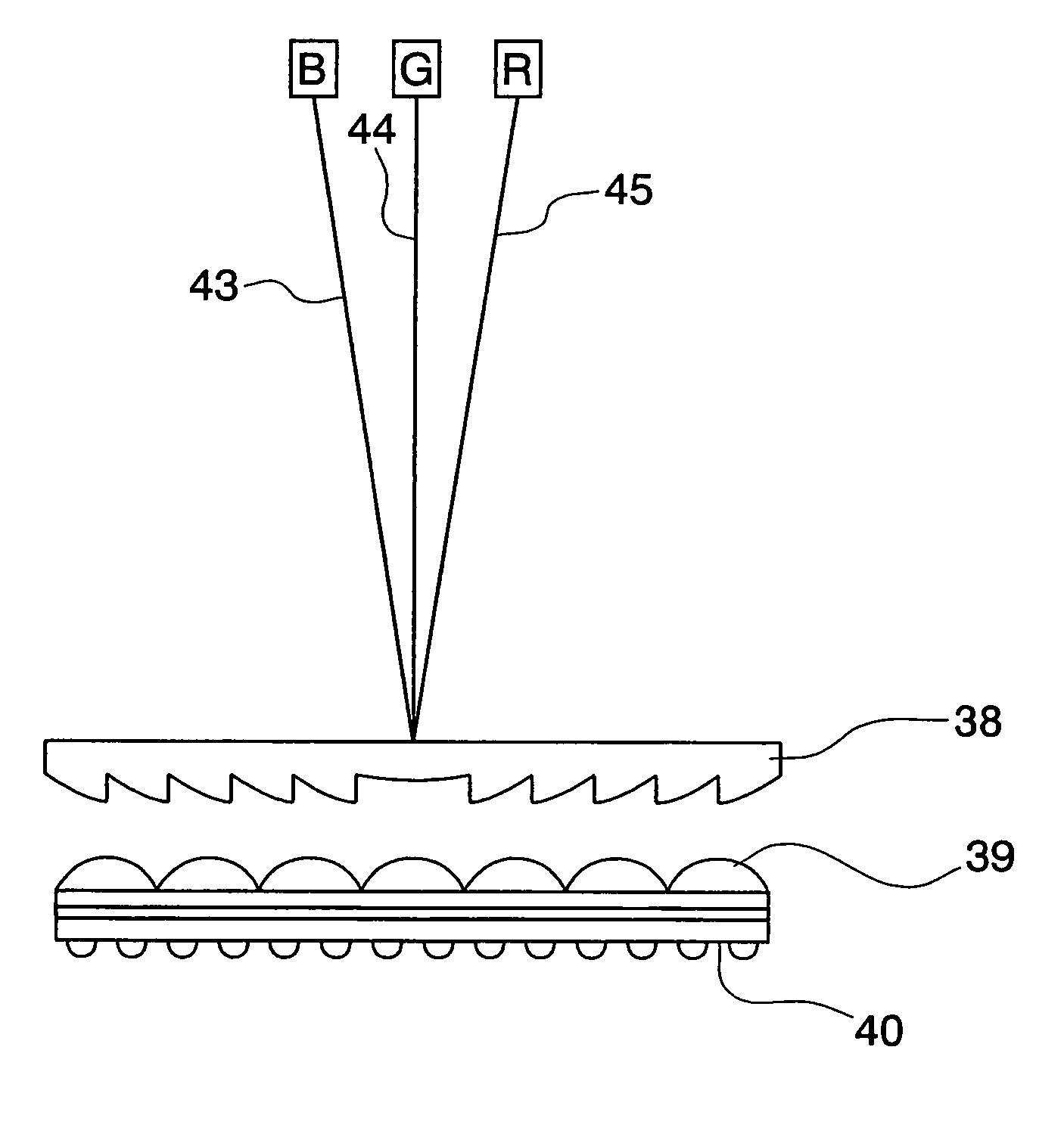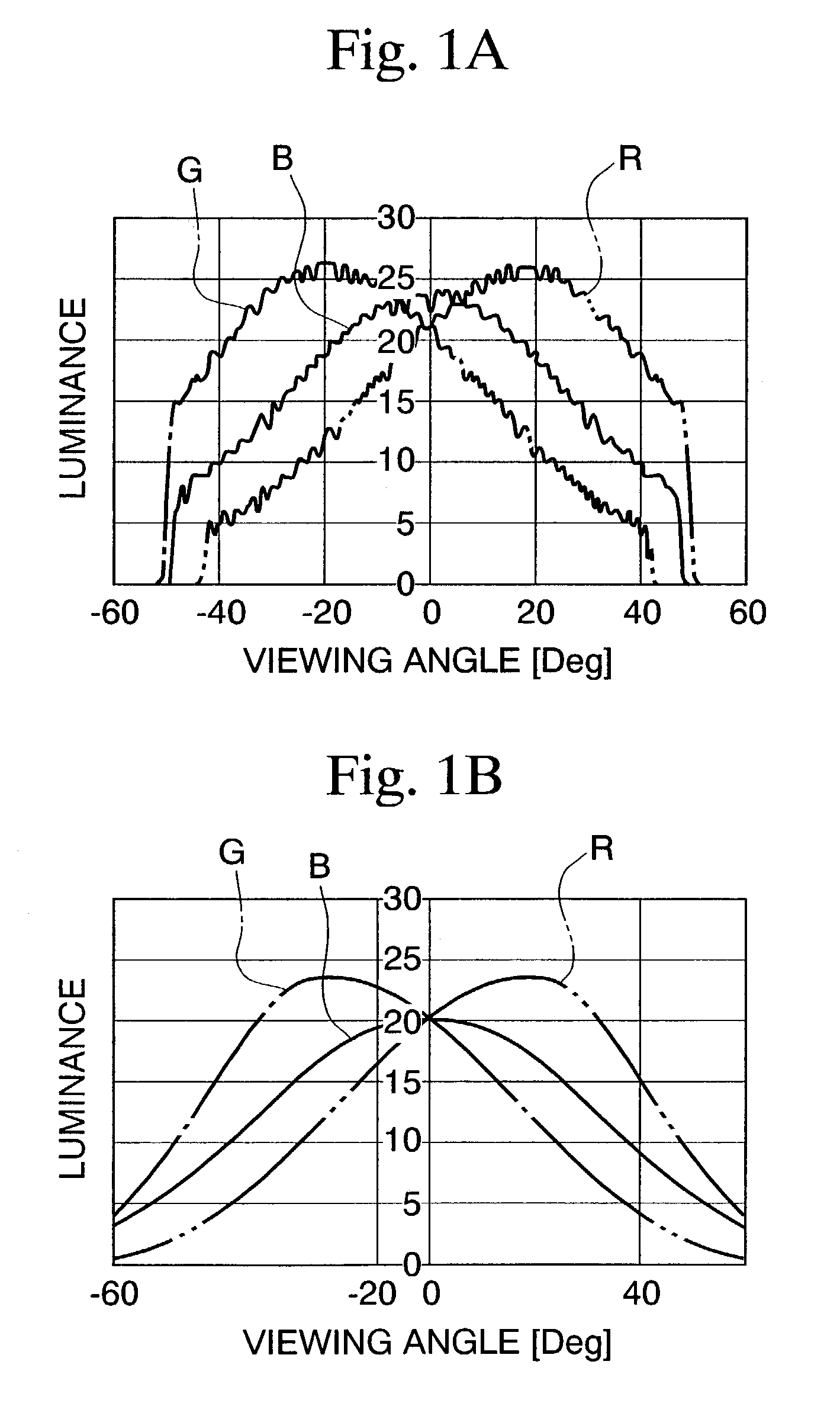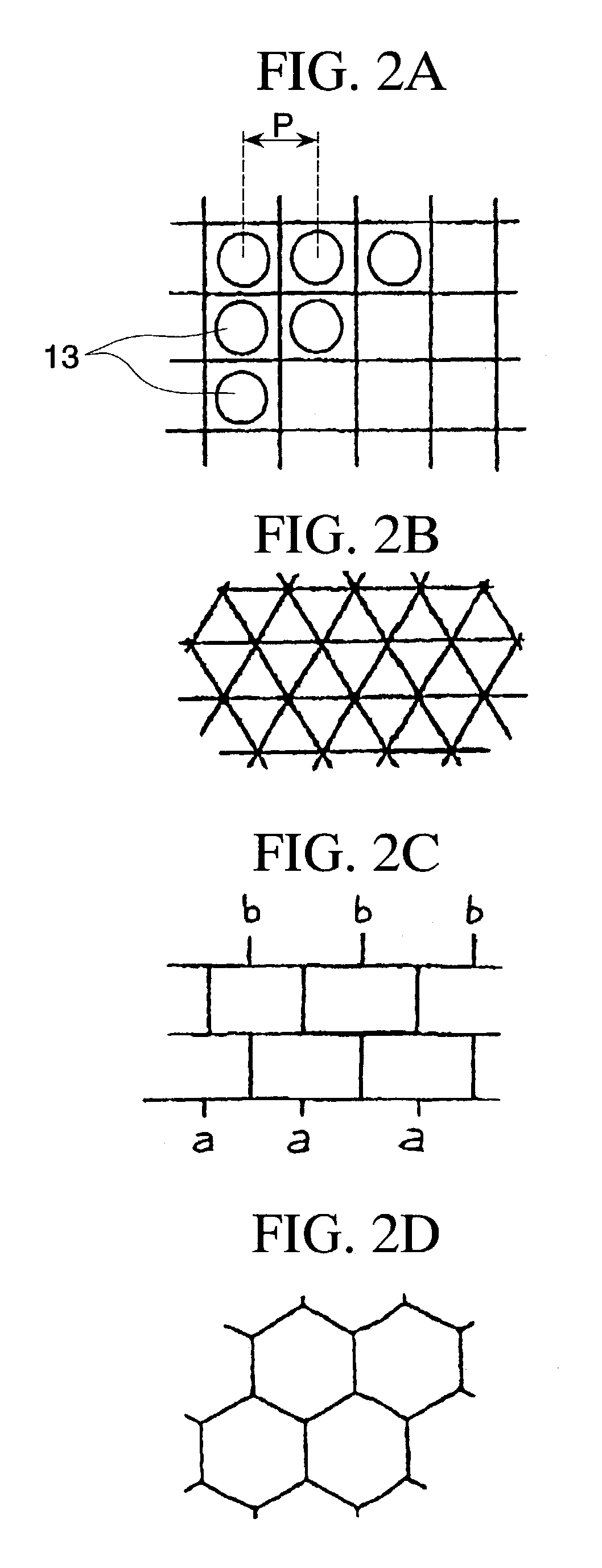Double-sided lens sheet and projection screen
a technology of projection screen and lens sheet, applied in the field of lenses sheet, can solve the problems of inability to precisely determine the position where the characteristics of the photosensitive resin layer change, limited observeable angle, and inability to align the unit lens on the front surface and the back surface, etc., and achieve the effect of reducing the color shi
- Summary
- Abstract
- Description
- Claims
- Application Information
AI Technical Summary
Benefits of technology
Problems solved by technology
Method used
Image
Examples
first embodiment
[0107]FIG. 12 is a cross section showing a general structure of a liquid crystal rear projection television. Reference numeral 29 is a light source lamp. Reference numeral 32 indicates an optical structural section. Reference numeral 33 indicates a liquid crystal panel. Reference numeral 34 indicates a first mirror. Reference numeral 35 indicates a projecting lens. Reference numeral 36 indicates a second mirror. Reference numeral 37 indicates a screen. FIG. 13 is a cross section viewed in A—A section in the screen 37.
[0108]In FIG. 13, reference numeral 38 indicates a Fresnel lens. Reference numeral 39 is a micro-lens. Reference numeral 40 is a black matrix section. Reference numerals 43, 44, and 45 indicated light beams which are projected from image projection devices for three-primary colors such as R, G, and B.
[0109]Embodiments of the present invention is explained as follows.
[0110]FIGS. 14A to 14C are views showing dual-lens sheets 30a, 30b, and 30c according to embodiments of t...
second embodiment
[0131]For a second embodiment according to the present invention, it is preferable that a diameter of the unit lens shown in FIGS. 5A and 5B, and its disposition pitch is 200 μm or narrower so as to form a screen which is preferable for observing a fine resolution image.
[0132]Such a fine pitch operation can be obtained by performing a molding operation for forming a lens according to 2P method (photo-polymer method) by using the hardened product of the radioactive-ray-curable-resin.
[0133]In an example shown in FIG. 5, a lens section having aspherical shape with 80 μm diameter is formed on one surface of the transparent supporting member 3 having 1.50 refractive index and 75 μm thickness according to 2P method by using the hardened product of the radioactive-ray-curable-resin.
[0134]In a case of example shown in the above drawings, the maximum width of the chromatic difference of magnification is 6 μm (7.5% to the diameter of lens); thus, it is possible to form BM with 92.5% of shadin...
third embodiment
[0148]Embodiments of a projection screen as an example for the present invention is explained as follows with reference to the drawings.
[0149]FIGS. 8A and 8B are general views for an element lens of a micro-lens sheet used in a projection screen according to the present invention.
[0150]FIG. 9 is a perspective view of an element lens contained in the micro-lens array sheet used in the projection screen according to the present invention.
[0151]FIG. 10 is a cross section of an element lens in a vertical direction contained in the micro-lens array sheet used in the projection screen according to the present invention.
[0152]FIG. 11 is a cross section of an element lens in a horizontal direction contained in the micro-lens array sheet used in the projection screen according to the present invention.
[0153]Here, regarding the lens array sheet shown in this embodiment, the shape of the lens are actually designed, and these drawings are made according to these designed lens shape.
[0154]In FIG...
PUM
 Login to View More
Login to View More Abstract
Description
Claims
Application Information
 Login to View More
Login to View More - R&D
- Intellectual Property
- Life Sciences
- Materials
- Tech Scout
- Unparalleled Data Quality
- Higher Quality Content
- 60% Fewer Hallucinations
Browse by: Latest US Patents, China's latest patents, Technical Efficacy Thesaurus, Application Domain, Technology Topic, Popular Technical Reports.
© 2025 PatSnap. All rights reserved.Legal|Privacy policy|Modern Slavery Act Transparency Statement|Sitemap|About US| Contact US: help@patsnap.com



